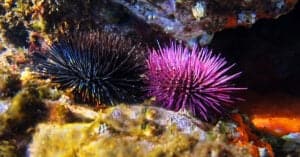Sea urchins are small, spiny, and round echinoderms in the class Echinoidea. There are about 950 species of sea urchins that inhabit the oceans and every depth zone in all climates. They play a significant role in the ocean’s ecosystem, though they face new threats daily.
They come in many colors, from red to purple to green, making them some of the most visible and fascinating sea animals. An average sea urchin is small, measuring around 1 to 4 inches in diameter. The giant sea urchin is approximately 14 inches in diameter. Sea urchins weigh about one pound on average. They move either by propelling themselves with their spines or by slowly crawling with tube feet.
Did you know that the enzymes in the flower urchin’s venom are powerful enough to cause severe pain and muscle contractions that lead to death? You better run if you see a flower urchin underwater!
Here are ten incredible facts you need to know about sea urchins.

1. Sea Urchins Don’t Have a Bone in Their Bodies

Sea urchins have a shell-like structure known as a test.
©Vladislav Gajic/Shutterstock.com
Sea urchins don’t have any bony structure. Instead, they have a shell-like structure known as a test, which is made from calcium carbonate. The test consists of small plate segments that cover the sea urchin entirely. The hard shell is somewhat similar to the bodies of sand dollars and starfish and is their primary form of protection.
2. The Red Sea Urchin is the Largest of the Species

The red sea urchin is the largest species.
© NatureDiver/Shutterstock.com
The maximum test diameter of a red sea urchin is approximately 7 inches, with a spine length of about 2 to 3 inches. They inhabit the North Pacific waters of America, from as far as Alaska to Baja California. Red sea urchins are commonly sighted in shallow waters and on rocky shores that are sheltered from extreme wave action.
3. Sea Urchins Have a Distinctive Appearance
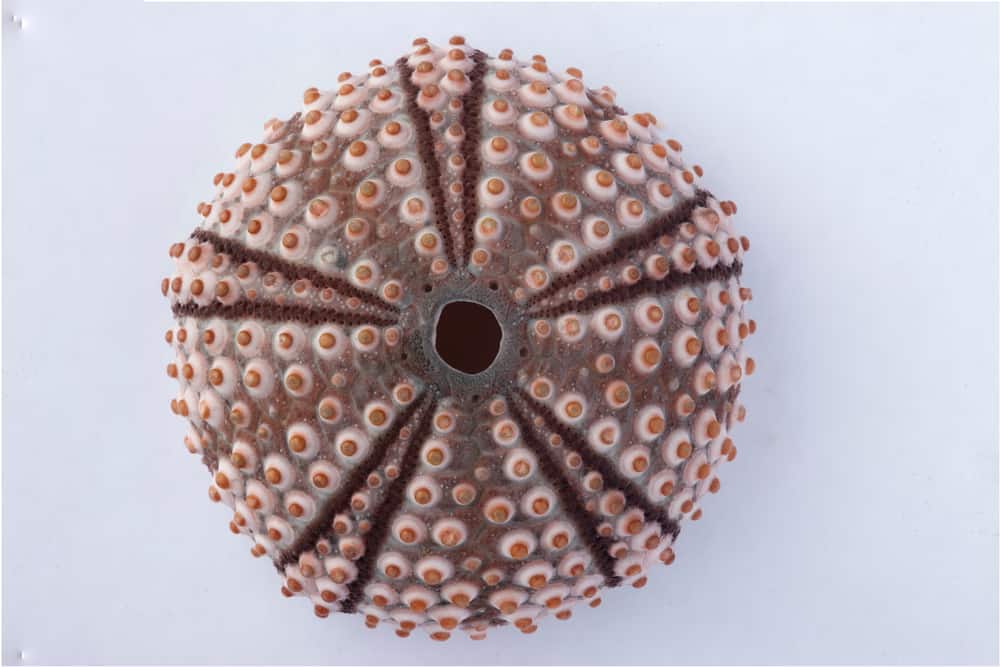
Sea urchins develop a five-fold symmetry when they become adults.
©Gorkem Yenim/Shutterstock.com
Sea urchins have spherical, flattened, or oval bodies that are covered by rigid exoskeletons and surrounded by spines. The length of these spines varies from species to species. Sea urchins’ spines are divided into two categories; primary for longer spines and secondary for shorter ones.
Sea urchins have bilateral symmetry as larvae, which means you can split their bodies into two halves that are the same on both sides. They develop a five-fold symmetry when they become adults, which means you can split their bodies into five similar sections. Their mouths are at the bottom of their bodies, and their anus is on top.
4. Sea Urchins Can Live Up to 200 Years in the Wild
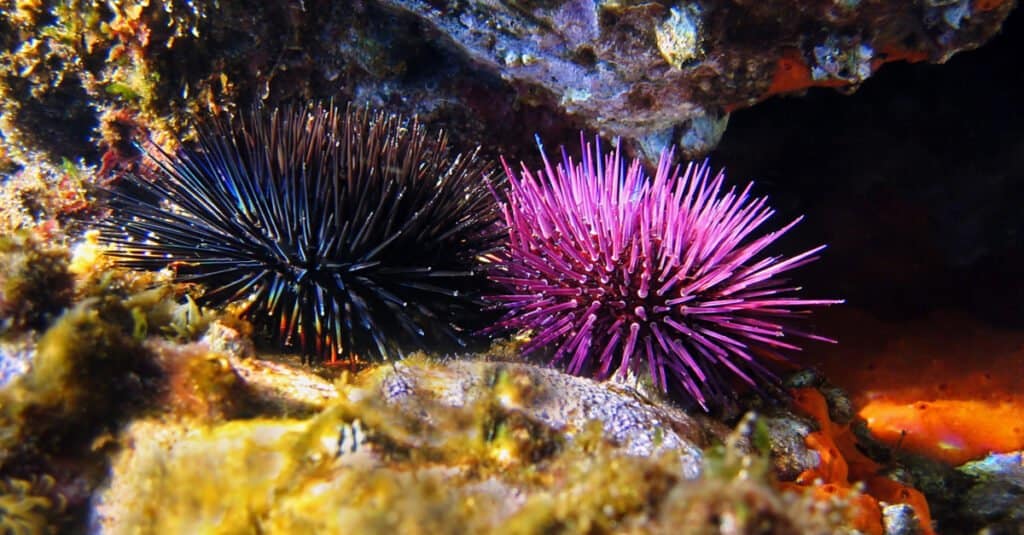
There is a possibility that these species might have lived longer in the past, but the ever-changing conditions of the ocean have made it harder for them to survive longer.
©Damsea/Shutterstock.com
Research suggests that sea urchins might live up to 200 years in the wild. Their life span reduces to about 30 years in captivity, while it’s generally over 30 years in the wild. The oldest sea urchin ever found was the red sea urchin, which was estimated to be around 200 years old.
There is a possibility that these species might have lived longer in the past, but the ever-changing conditions of the ocean have made it harder for them to survive longer. The oversaturated ocean pollution and the increasing fishing by humans are constantly putting the lives of sea urchins in critical danger. Some of the sea urchins have already been listed as endangered.
5. Sea Urchins Have a Simple Nervous System and a Reproductive Period
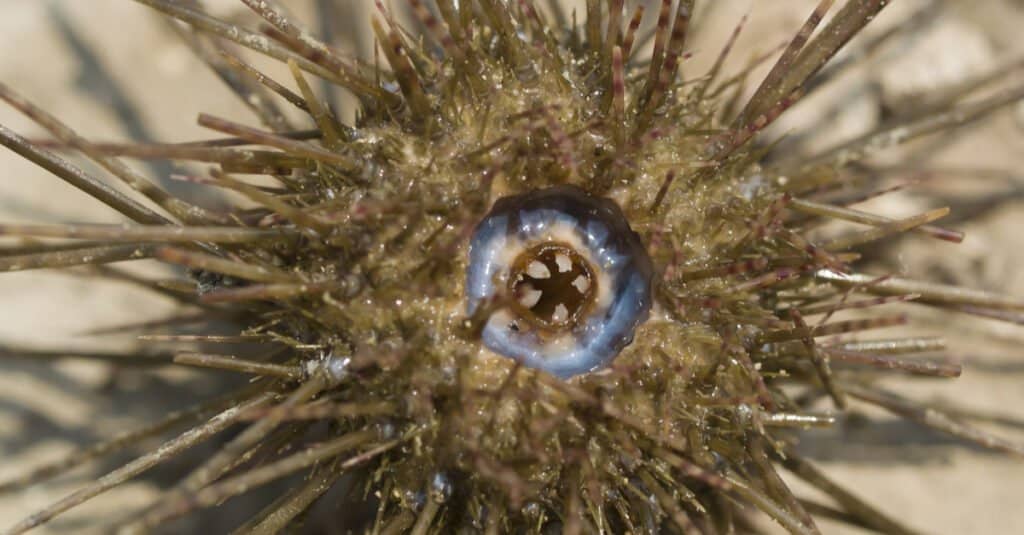
Sea urchins have very simple nerves that radiate throughout their bodies from a neural ring around their mouths.
©narupong sooknatee/Shutterstock.com
Technically, sea urchins don’t have a brain. Instead, they have very simple nerves that radiate throughout their bodies from a neural ring around their mouths. These nerves allow the sea urchins to control their limbs and other body parts. They also give them a sense of touch.
Sea urchins use external fertilization in reproduction. Females and males release their eggs and sperm into the surrounding water. Therefore, fertilization occurs independently of the parents.
Embryos usually develop in the first twelve hours. They start floating on water as they grow into larvae, allowing currents to carry them along while feeding on phytoplankton. It takes many months for larvae to develop into juveniles. The young sea urchin then sinks to the sea bed as the shell continuously grows and hardens. Juveniles become adults in about five years but attain sexual maturity in two years.
6. Sea Urchins Have Hundreds of Tiny Feet
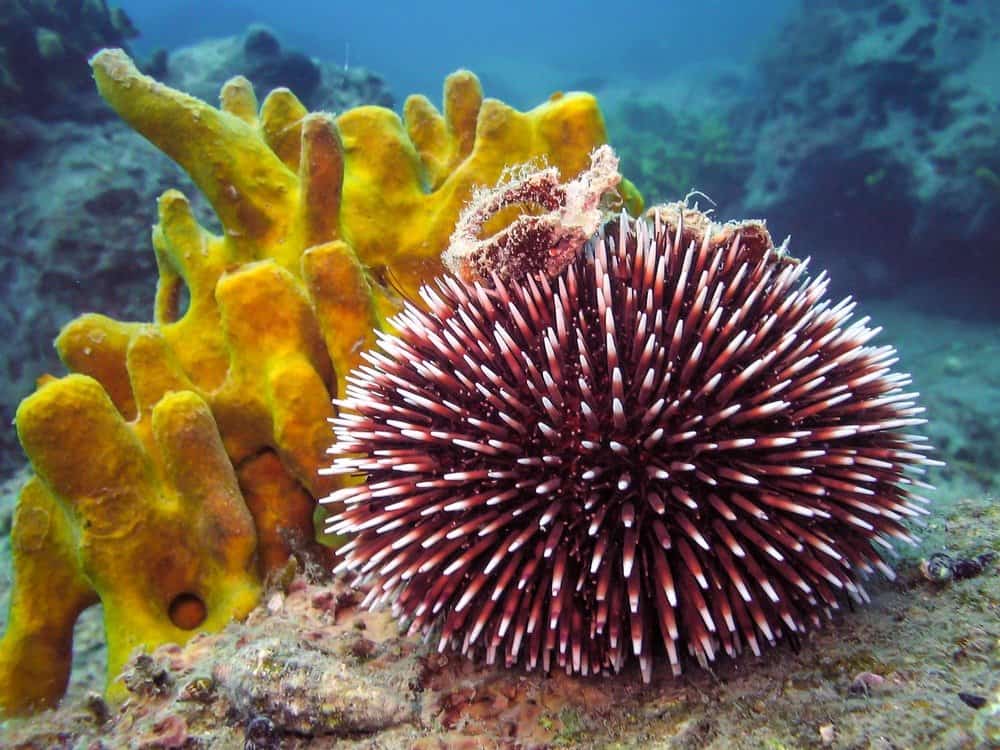
Each tube foot is a small sucker-like shape that allows the sea urchin to grip surfaces and pull itself ahead.
©JGA/Shutterstock.com
Sea urchins have pairs of small, very flexible limbs called tube feet, which enable them to move swiftly in and out of their shells. They use their bodies’ internal water pressure to make their tube feet move along. Each tube foot is a small sucker-like shape that allows the sea urchin to grip surfaces and pull itself ahead. This often creates the illusion that they are using their spines to facilitate movement.
7. Sea Urchins Can Injure People
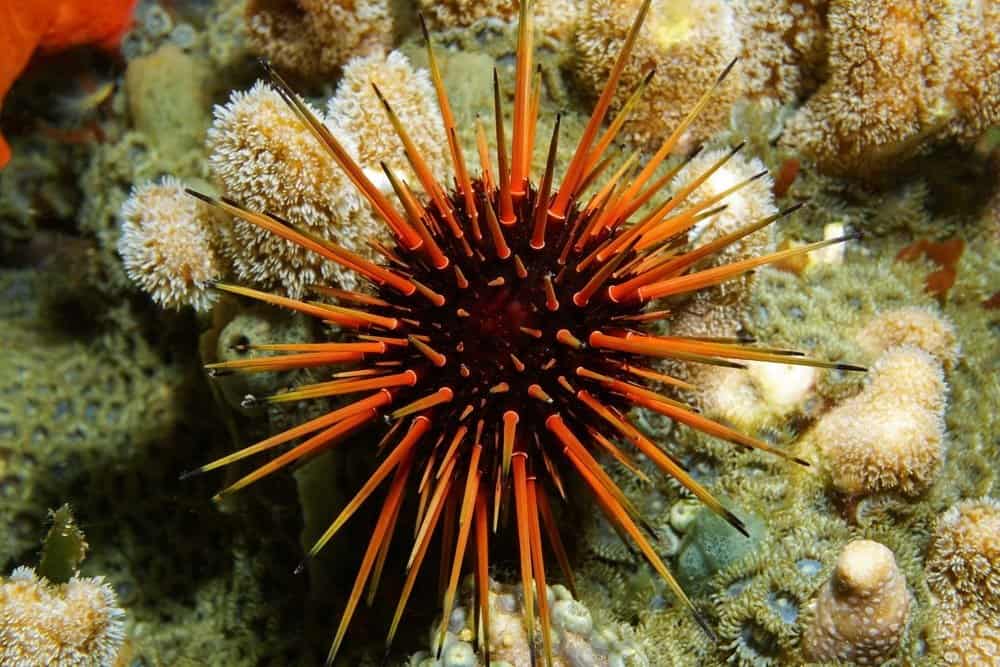
The sea urchin’s venom isn’t usually fatal, though some people are very allergic to the poison.
©Damsea/Shutterstock.com
Sea urchin stings are very dangerous. Their spins are sharp enough to pierce human skin, causing wounds. Besides, their spines tend to break off, meaning they get inside the person, leading to more pain and infection. Even worse, their spines are so brittle that they can be challenging to extract.
The sea urchin’s venom isn’t usually fatal, though some people are very allergic to the poison. Therefore, this causes a severe reaction in the form of breathing difficulties. It could prove fatal if not medically attended to.
8. The Flower Urchin is the Most Dangerous of the Species

Flower urchins are commonly found in the Indo-West Pacific region.
©unterwegs/Shutterstock.com
Another incredible fact about sea urchins is their potential danger. The flower urchin, in particular, is the deadliest of all. They are commonly found in the Indo-West Pacific region. Unlike other sea urchins, the flower urchins contain deadly venom, that can kill a human. They have two types of venom. The first attacks the nerves and blood, although it’s not dangerous on its own.
The second venom is also not dangerous but makes the first one more poisonous. The combination of the two venoms can lead to anaphylactic shock, convulsions, and death. Although the stings are often fatal, you can survive a sting with adequate treatment. The flower sea urchin was named the most dangerous sea urchin in the world by the Guinness Book of World Records in 2014.
9. Sea Urchins are Omnivores
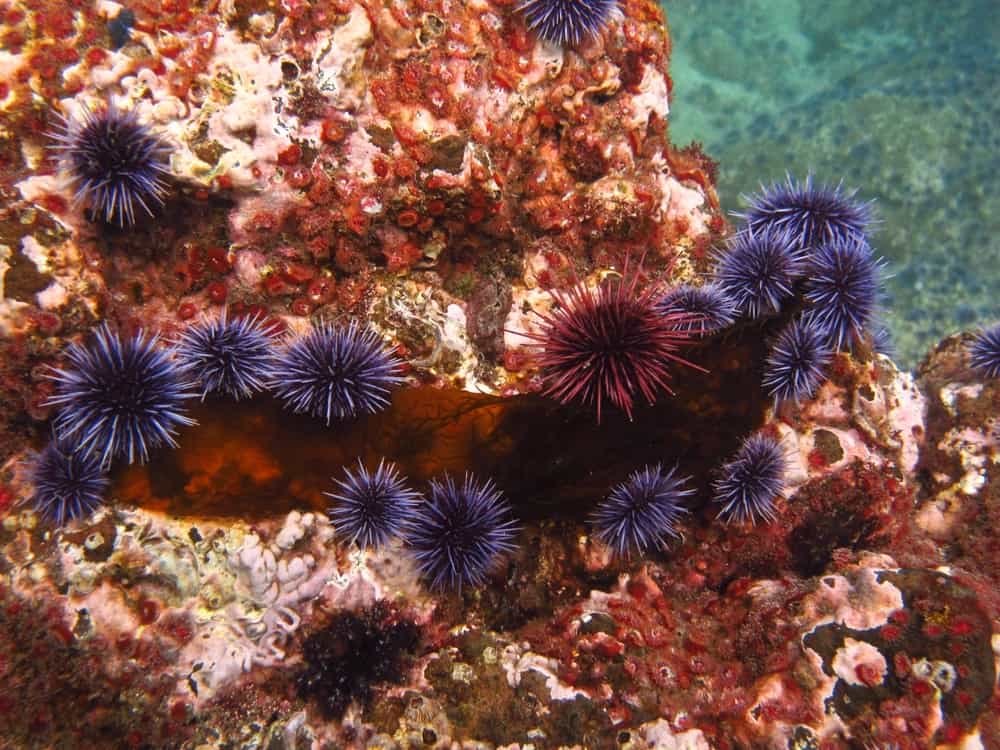
Sea urchins are predominantly omnivores since they feed on plants and animals.
©Brandon B/Shutterstock.com
The diet of a sea urchin consists mainly of algae, crinoids, brittle stars, sponges, mussels, and polychaetes. They are predominantly omnivores since they feed on plants and animals. Sea urchins play a significant role in the ecosystem. They maintain the balance between coral and algae.
In turn, sea urchins are preyed on by otters, lobsters, crabs, and numerous fish. Otters use their sharp claws and greater strength to wipe away the sea urchin’s spines before breaking it open. Using their pincers, crabs, and lobsters break off the sea urchin’s spines before getting at its insides. Predatory fish also bite off the spine before opening the shell.
10. Sea Urchins are a Very Delicious Food for Humans
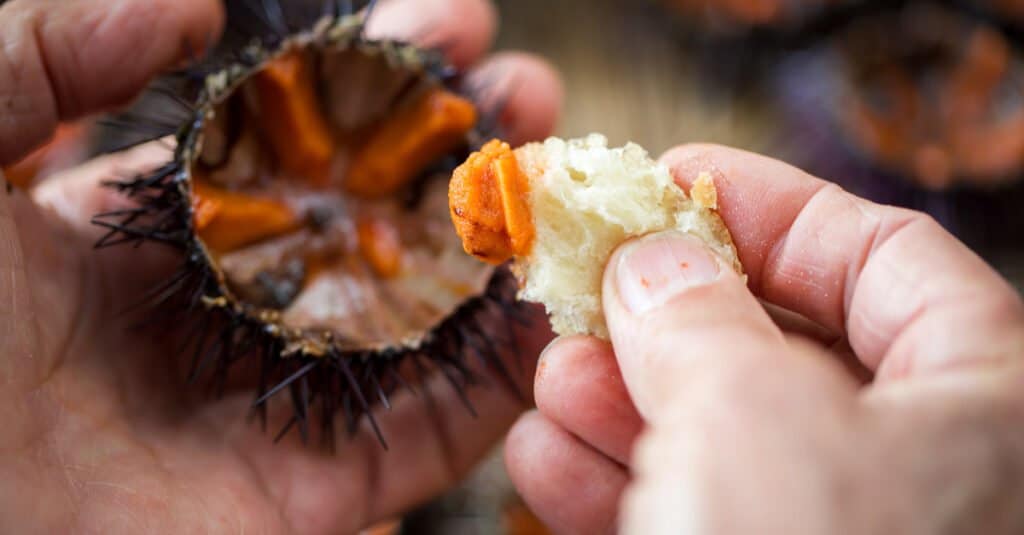
Sea urchins provide flavor to soups, souffle, soups, and omelets, among other European dishes.
©Sabino Parente/Shutterstock.com
People around the world eat sea urchins. They form a key ingredient in mayonnaise and Hollandaise sauce that’s used on fish dishes. In Mediterranean cuisine and New Zealand, chefs serve raw or cooked sea urchins with seasoned lemons. Chileans also eat raw sea urchins. Sea urchins provide flavor to soups, souffle, soups, and omelets, among other European dishes.
The photo featured at the top of this post is © NatalieJean/Shutterstock.com
Thank you for reading! Have some feedback for us? Contact the AZ Animals editorial team.




